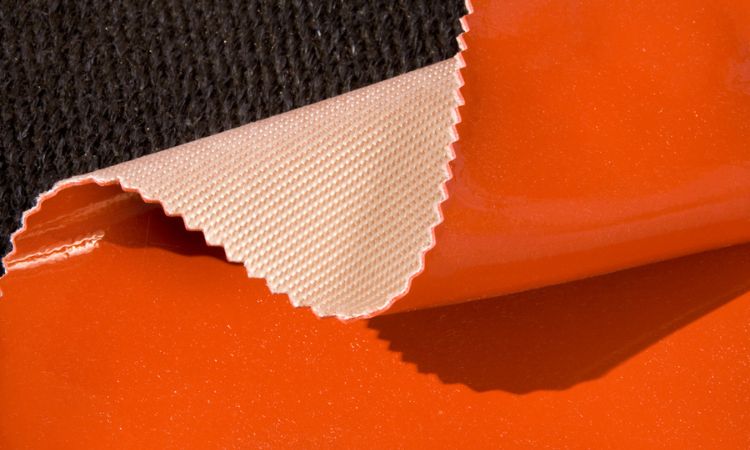Exploring the Evolution of Coated Fabric Market Technologies: From Traditional to Cutting-Edge

Coated fabrics are fabrics that have been treated with a layer of material such as rubber, plastic, resin, or metal to enhance their properties and performance. Coated fabrics are widely used in various industries such as automotive, fashion, healthcare, military, and construction, where they provide benefits such as waterproofing, fire resistance, abrasion resistance, thermal insulation, and antimicrobial protection.
The global coated fabric market size reached a value of about USD 28.72 billion in 2023. The market is further estimated to grow at a CAGR of 4% in the forecast period of 2024-2032 to reach a value of around USD 40.71 billion by 2032. This growth is driven by the increasing demand for coated fabrics in various end-use sectors, especially in emerging economies, and the continuous innovation and development of new coating technologies and materials.
In this blog post, we will explore the evolution of coated fabric technologies, from traditional to cutting-edge, and how they have transformed the applications and functionalities of coated fabrics over time.
Traditional Coated Fabric Technologies
The origins of coated fabrics can be traced back to ancient times, when people used natural substances such as animal skins, wax, tar, and resin to coat fabrics and make them more durable and resistant to environmental factors. For example, the ancient Egyptians used resin-coated linen to make mummies, and the ancient Romans used tar-coated canvas to make tents and sails.
The first modern coated fabric technology emerged in the 19th century, when Charles Macintosh invented the process of applying rubber dissolved in naphtha to cotton fabric, creating the first waterproof fabric. This fabric was used to make raincoats, which were later improved by Thomas Hancock and Thomas Burberry. Other traditional coating methods include calendering, which involves passing fabric through heated rollers to apply a thin layer of rubber or plastic, and spreading, which involves applying a paste or solution of coating material to the fabric surface using a knife or a roller.
Traditional coated fabrics have been used for various applications, such as protective clothing, industrial fabrics, upholstery, luggage, and inflatable products. However, they also have some limitations, such as low breathability, poor adhesion, and susceptibility to cracking and aging.
Advancements in Coating Technologies
The second half of the 20th century witnessed a significant advancement in coating technologies, with the introduction of synthetic polymers in coating formulations. Synthetic polymers, such as polyvinyl chloride (PVC), polyurethane (PU), acrylic, and silicone, offer superior properties and performance than natural materials, such as higher flexibility, elasticity, strength, durability, and resistance to chemicals, heat, and UV rays.
Along with the development of new coating materials, new coating techniques also emerged, such as extrusion, which involves melting and forcing the coating material through a die onto the fabric, and transfer coating, which involves applying the coating material to a release paper and then transferring it to the fabric under heat and pressure. These techniques allow for more precise and uniform coating, as well as the possibility of creating multilayer and composite coatings.
Advancements in coating technologies have expanded the applications of coated fabrics, especially in the automotive, fashion, and healthcare industries. For example, coated fabrics are used to make airbags, seat covers, dashboards, and convertible tops in the automotive industry, to make leather-like and suede-like fabrics, sportswear, and footwear in the fashion industry, and to make surgical gowns, gloves, masks, and wound dressings in the healthcare industry.
Cutting-edge Innovations in Coated Fabric Technologies
The 21st century has witnessed a new wave of innovation in coated fabric technologies, driven by the emergence of nanotechnology, smart coatings, and sustainable solutions. Nanotechnology involves manipulating matter at the nanoscale, which can result in novel properties and functions of coated fabrics. For example, nanocoatings can provide superhydrophobicity, self-cleaning, antibacterial, antifouling, and anti-odor properties to coated fabrics, as well as enhance their mechanical, thermal, and electrical properties.
Smart coatings are coatings that can sense and respond to external stimuli, such as temperature, light, moisture, and pressure, and change their properties and functions accordingly. For example, smart coatings can provide thermochromic, photochromic, hydrochromic, and piezoelectric effects to coated fabrics, which can enable them to change color, generate electricity, or regulate temperature.
Sustainable coating solutions are coatings that aim to reduce the environmental impact of coated fabrics, by using biodegradable, renewable, or recycled materials, or by reducing the use of toxic substances, energy, and water in the coating process. For example, sustainable coatings can use biopolymers, such as starch, cellulose, and chitosan, or natural substances, such as beeswax, soybean oil, and clay, to coat fabrics, or use water-based, solvent-free, or plasma-based coating techniques.
Future Trends and Implications
The evolution of coated fabric technologies is expected to continue in the future, as new materials, techniques, and applications are developed and explored. Some of the future trends and implications of coated fabric technologies are:
- The integration of coated fabrics with sensors, actuators, and electronic devices, to create smart textiles that can monitor, communicate, and interact with the environment and the user.
- The development of multifunctional coatings that can provide multiple benefits and features to coated fabrics, such as waterproofing, fire resistance, thermal insulation, and antimicrobial protection.
- The customization and personalization of coated fabrics, to meet the specific needs and preferences of the user, such as color, texture, pattern, and function.
- The potential impact of coated fabric technologies on various industries, such as automotive, fashion, and healthcare, where they can improve the performance, safety, comfort, and aesthetics of the products and services.
Coated fabric technologies have come a long way from their ancient origins, and have transformed the properties and applications of coated fabrics over time. Coated fabrics are now more than just fabrics, they are functional and intelligent materials that can offer various benefits and features to the user and the environment. Coated fabric technologies are expected to keep evolving and innovating, creating new opportunities and challenges for the coated fabric industry and its end-users.


 English
English 
